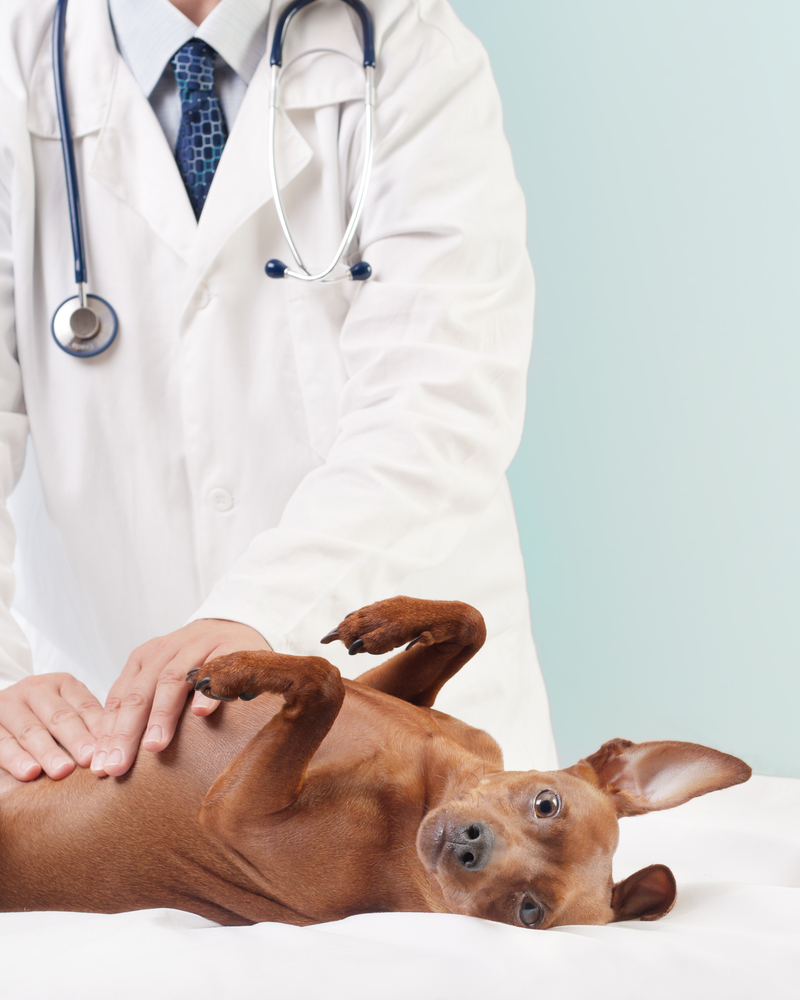
Bloat, also known as Gastric Dilatation-Volvulus (GDV), is not merely an inconvenience or a temporary discomfort for your dog; it is an urgent medical emergency that can have fatal consequences if not treated swiftly. Understanding what bloat is, knowing the causes, recognizing the symptoms, and being aware of when to rush to the emergency hospital are crucial in preventing a tragic outcome for your beloved canine.
What is Bloat in Dogs?
Bloat in dogs is a condition that involves the stomach swelling with gas, fluid, or a combination of both. The distension is often the first phase of a two-part ordeal, where the second part, volvulus, involves the rotation of the stomach. This rotation can lead to a catastrophic scenario where blood flow is cut off to vital organs, and toxins begin to build up in the dog's system.
The progression from bloat to a full-blown GDV can happen in a matter of minutes to hours. It creates an internal environment where the clock is ticking against your pet's survival. Understanding what bloat truly means is the first step in saving your dog's life. Knowing the causes can help in prevention, and recognizing the symptoms can lead to prompt action.
Causes of Bloat
The exact causes of bloat in dogs can be elusive, but several factors have been identified that may contribute to the development of this condition. Firstly, genetics play a significant role. Dogs with a family history of bloat are at increased risk, suggesting that certain breeds and body types are predisposed to this condition. Additionally, lifestyle and dietary habits contribute to the likelihood of bloat. Dogs that consume their meals rapidly, eat one large meal a day, or exercise vigorously before or after eating might be at greater risk.
Moreover, the age and health of a dog can influence the chances of experiencing bloat. Older dogs are generally more susceptible, as are those with certain medical histories or conditions. Stress is also a notable contributor. Situations that cause anxiety or fear can precipitate an episode of bloat in dogs that are prone to the condition. By understanding these causes, you can take steps to minimize the risks for your dog.
Recognizing the Symptoms of Bloat
Recognizing the symptoms of bloat in dogs is critical for any dog owner. Initially, the signs may be subtle and easily overlooked, but they quickly escalate to more severe manifestations.
• Distended Abdomen: A visibly enlarged or bloated abdomen is a primary indicator of bloat.
• Unsuccessful Vomiting: Attempts to vomit without producing anything or producing only foamy mucus.
• Restlessness: Agitation, pacing, or an inability to get comfortable.
• Excessive Salivation: Drooling more than usual.
• Rapid Breathing: Shallow or rapid breathing.
• Weakness: Signs of weakness, collapse, or lethargy.
• Pale Gums: Gums may appear pale or have a blue tinge.
• Elevated Heart Rate: A rapid or weak pulse.
How to Respond to Bloat
• Seek Emergency Veterinary Care: If you suspect your dog is experiencing bloat, seek immediate veterinary attention, as time is critical in treating this condition.
• Do Not Delay: Bloat is a medical emergency that requires prompt intervention. Waiting or attempting home remedies can be detrimental to your dog's health.
• Avoid Feeding or Water: Refrain from offering food or water to your dog to minimize the risk of further complications during transportation to the veterinary clinic.
• Even if your dog's symptoms resolve on their own, it's important to have them evaluated by a veterinarian to rule out underlying causes and discuss preventative measures.
By recognizing the signs of bloat and responding promptly, pet owners can help ensure the best possible outcome for their dog.
If you suspect your pet is experiencing bloat or for further guidance, call (817) 571-2088 or visit Airport Freeway Animal Emergency Hospital in Euless, Texas, today.









